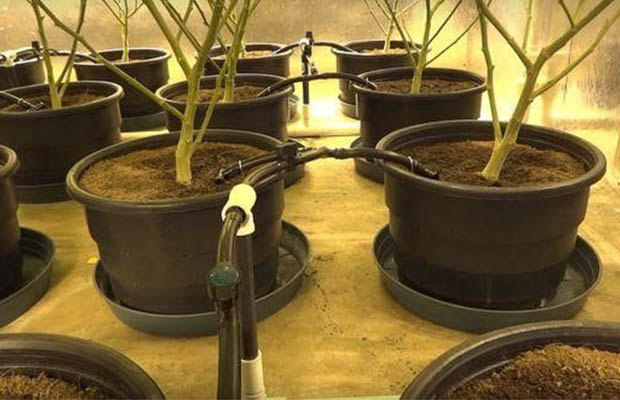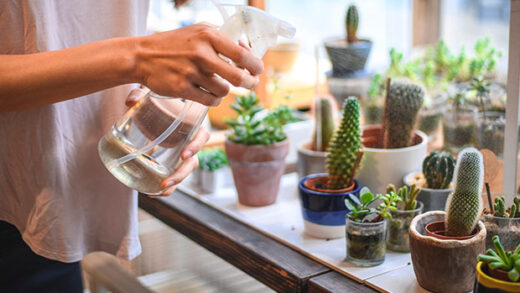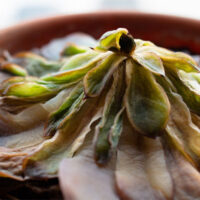A DIY auto-watering system could be the solution for you if you feel that being present to water your plants is a problem. But how to set up grow room watering system?
With the right setup, you can add nutrients to a reservoir and then rest easy knowing that your cannabis plants will receive automatic irrigation.
An automatic watering system for your marijuana plants is simple to install, affordable, and greatly simplifies the process of feeding your cannabis plants. Learn more about the watering system for grow rooms by reading on.
Table of Contents
How Does Automatic Irrigation Work?
A water reservoir with a pump, tubing, and a timer is essentially what makes up an automatic irrigation system. The reservoir typically has a water pump attached to it and is situated outside the grow tent. Through a tubing, the water pump supplies water to the plants in the tent.
The complexity is determined by the number of plants you have and the size of your tent; the more complex and expansive the space, the more hosing you’ll need, the bigger the reservoir, and the more powerful the pump will be. The system is identical aside from that; it just needs to be scaled according to the size of the operation.
Also Read: How To Heat A Grow Room?
Setting Up Your Automatic Watering System
All you need to have ready to set up your automatic irrigation system are some scissors and a way to make holes in the water reservoir.
Make a hole in the water reservoir’s side with a drill. The water pump, air stone, and thermometer will then be placed inside the reservoir. Drill another hole in the lid and insert the thermometer, air pump tubing, and power cord for the water pump. Either by cutting one or by routing it through a ventilation port, make a path for the main water line to enter the grow tent.

Individual drippers and drip rings are the two methods we’ll discuss for watering your plants. Here is a list of the setup procedures.
Setting Up Individual Drippers
Puncture the main water line and connect the drippers to install them. No need to worry, just cut the tubes to the appropriate size for your needs. After that, insert the tubes into the pots.
Setting Up Drip Rings
Make sure the tube length is correct, then cut it to the appropriate size. Simply attach the connectors to the tube, then add the drip rings to complete the process.
Read More:
Components of An Watering System
We list six most common components below:
Water Reservoir
A system for automatic irrigation’s most crucial component is its water reservoir. Let’s look at the necessary parameters of the reservoir (and by reservoir, we mean and container that holds water):
The reservoir should be kept at a temperature of between 62°F (16°C) and 75°F (24°C).
Size: A grow tent 120x120cm in size will use about 12 liters of water per day. At least 3–4 days’ worth of water must be stored in the reservoir to keep the machinery operating.
Height: To use gravity to draw water and to prevent any potential pressure-related problems, the reservoir’s height should be greater than the top of the pot your plants are in.
The reservoir’s color is crucial; it should be dark to inhibit bacterial growth, especially if you decide to add nutrients.
Water Pump
Consequently, how do you pick a water pump? In order to draw water into the grow tent and evenly distribute it among all plants, it must have sufficient power and pressure. We advise using an 1100 L/h pump if your tent contains fewer than ten plants. I advise you to set up two irrigation systems with two different water pumps if there are more than 10 plants in your tent. This is due to the fact that distributing water evenly among many plants requires more than one pump.
Timer
It’s also crucial to schedule watering times. Make your irrigation system controlled down to the second by using a digital timer with one-second intervals.
Oxygenation
Maintaining oxygen in the reservoir’s water or nutrient mixture is crucial. You can oxygenate a water reservoir that is less than 120 liters in capacity using standard air pumps and air stones, but you must use a stirring pump if your reservoir is more than 120 liters in capacity. In fact, not providing enough oxygen is a common cause of cannabis plants dying. Plants also require oxygen to survive.
Digital Thermometer
You can maintain a suitable temperature by using a basic digital aquarium thermometer. The growth of harmful bacteria in water can be stopped at a temperature of 18 to 20 degrees Celsius.
Main Water Line
The tube that transports water to the tent is known as the main water line. Because the semi-rigid, puncture-resistant polyurethane tube will last longer, we advise using it. Of course, you are free to use other materials; it is entirely up to you. However, avoid using clear piping as light leaking through it will promote the growth of algae and clog your system.
Buying An Auto Watering System for Your Grow Room
For a fair price, you can purchase an automatic watering system for your grow room on Ebay or Amazon. Problematically, these might not always be sufficient for your grow room.
For the best result and for a better price, you should build your own DIY Auto Watering System so it is more suitable to your grow room
In the past, I have used a setup I purchased from Ebay. and Since it wasn’t sufficient for growing four weed plants, I ultimately had to construct my own watering system.
I came to the conclusion that I needed to purchase a more capable watering system.
Related Reading:
FAQs
How Do You Install Irrigation in a Grow Room?
- Connect your watering line to the adapter after attaching your adapter to your faucet.
- Run your line into your grow room, attach the other end to your faucet, and then turn it on.
- Consider carefully how to run your line around your room.
- Anyplace holes are required, punch them with the hole punch.
How Do You Automate Watering Indoor Plants?
If you want an automatic houseplant system for watering houseplants that works for the entire season, such as in a greenhouse where you’re growing multiple plants, you can use a drip system on a timer. When watering plants, drip irrigation is frequently preferable because it reduces the risk of disease transmission.
Is Misting Better Than Watering Plants?
Misting houseplants is a very simple and effective way to boost humidity. “Misting is also an easy solution to the risk of overwatering your plants,” he adds, instructing to, “pay attention to the color and texture of the leaves on your plant. Regular misting will help plants with brown or dry leaf tips.
To Sum Up
Despite how difficult it may seem, installing an automatic irrigation system is actually quite easy. If you are constantly on the go or have a busy schedule at work, an automatic irrigation system will be ideal for you as it will save you a ton of time and effort.
Please feel free to share your ideas and advice with other growers in the comment section below if you currently have automatic irrigation setup in your home. For more grow room guide, read our post on grow room cost calculator.

















